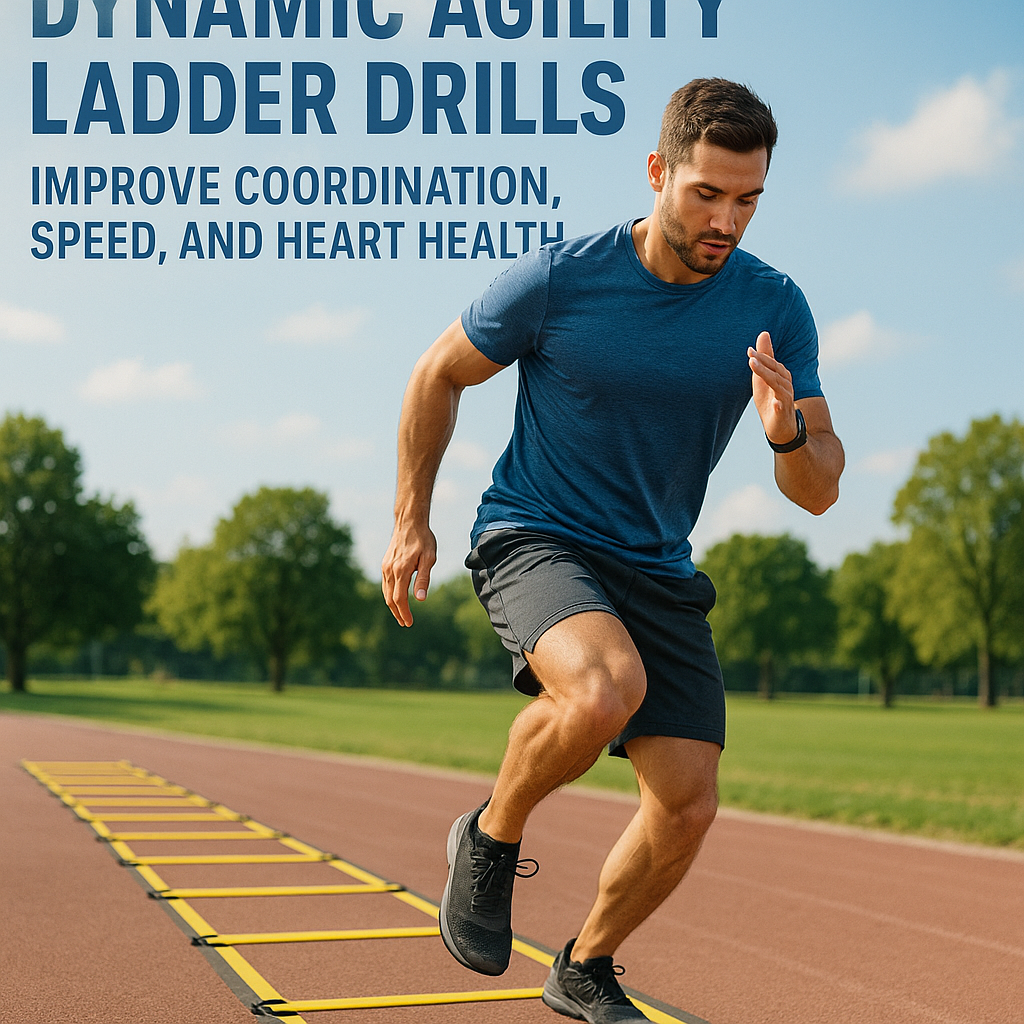Agility ladder drills are a fun and effective way to improve your speed, coordination, and cardiovascular fitness. Whether you’re an athlete looking to level up your performance or someone wanting a new way to stay active, ladder drills can be an exciting addition to your workout. In this article, we’ll explain what agility ladder drills are, why they are good for your health, how to do them correctly, and tips to stay safe while training.
What Are Agility Ladder Drills?
Agility ladder drills are exercises performed using a flat ladder placed on the ground. The goal is to move your feet quickly and accurately through each space (or “rung”) in the ladder. These drills focus on improving quick footwork, balance, and body control.
Some of the most common drills include high knees through the ladder, side-to-side shuffles, hopscotch, and in-and-out steps. You can change speed, direction, and patterns to keep your workout fresh and challenging.
Health Benefits and Safety Precautions
Agility ladder drills offer a wide range of health benefits. First, they improve heart health because they are a form of cardiovascular exercise. You’ll be moving fast, which raises your heart rate. This boosts stamina and supports a healthy weight.
Next, they enhance coordination and balance. By needing to place your feet with precision, your brain and muscles must work together more effectively. This can help with sports, dancing, and everyday movement.
Finally, these drills help build strength in the legs and core muscles while improving your agility and reaction time.
However, it’s important to take some precautions:
- Always warm up before starting.
- Start slow and increase difficulty as you improve.
- Wear proper shoes to avoid slipping or twisting your ankle.
- Make sure the ladder is placed flat and doesn’t move while you use it.
How to Do Agility Ladder Drills
Step 1: Warm Up
Begin with a 5-10 minute warm-up such as light jogging or jumping jacks. This prepares your muscles and gets your heart ready for exercise.
Step 2: Choose Your Drill
Pick a drill based on your skill level. For beginners, the “One Step” or “High Knees” drill is a good place to start.
Example Drill: High Knees
- Stand at the end of the ladder.
- Start by stepping one foot into the first square, followed quickly by the other.
- Raise your knees high with each step as you move forward.
- Continue this pattern through the entire length of the ladder.
Step 3: Repeat and Rest
Repeat the drill 3 to 4 times, resting 30 seconds between sets. As you get stronger, increase your speed or try more complex patterns like lateral shuffles or hops.
When to Include Agility Ladder Drills
You can add agility drills to your workout 2 to 3 times a week. They’re best done during your warm-up or as part of a high-intensity circuit. Athletes can include them on speed or conditioning days. If your goal is better heart health, make these drills part of your cardio workout.
Tips to Avoid Injury
Injuries can happen if you’re not careful. To stay safe during agility ladder drills, follow these tips:
- Use a flat, non-slip surface like a gym floor or grass field.
- Begin at a slow pace to learn the moves correctly.
- Keep your knees slightly bent and land softly to protect your joints.
- Rest between sets to avoid overworking your muscles.
- Listen to your body and stop if you feel pain.
Conclusion
Agility ladder drills are a powerful exercise tool for people of all fitness levels. They improve coordination, boost your heart health, and help you stay balanced and strong. By following the right steps and precautions, you can enjoy this fun and engaging workout while avoiding injury. Add agility drills to your routine and watch your fitness soar!
Share this content:



